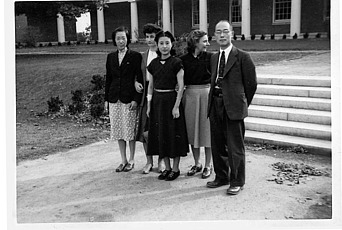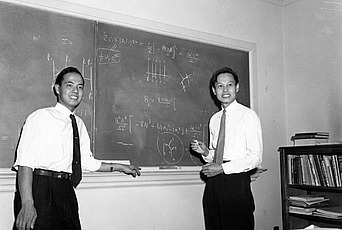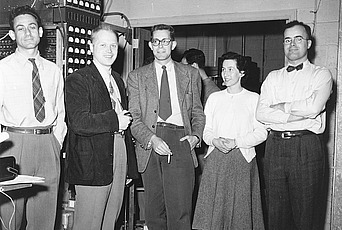From the Archives: My Journey Through the Archives
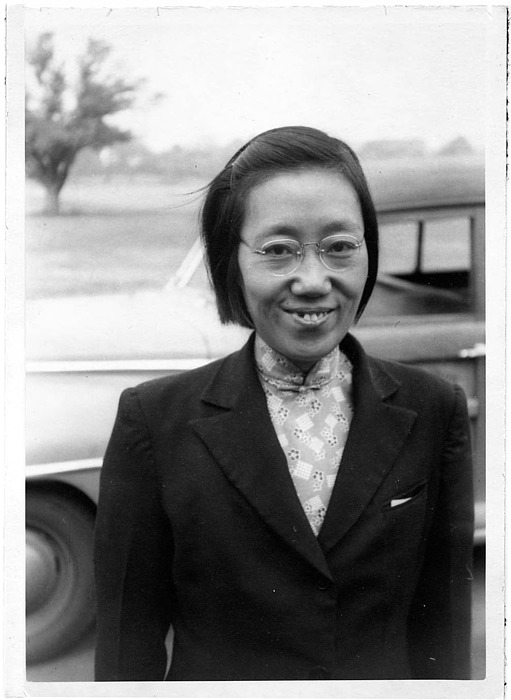
I had the privilege of attending Women and Mathematics (WAM) at IAS this past May. Besides the intelligent female peers, the enjoyable mathematics, and the delectable cuisine, one particular experience stands out in my memory: my initial visit to the archive. During the opening talk for WAM, Caitlin Rizzo, the Institute’s archivist, proudly informed us that the first woman of color at IAS—whose name I would later learn was C.S. Wang Chang—could be traced back to 1945; Caitlin encouraged us to come to the Shelby White and Leon Levy Archives Center to explore Wang Chang’s profile and the profiles of other women of color, if our time allowed. This piqued my interest immediately, as my former female mathematics professor, who earned her Ph.D. at Harvard, had once mentioned the challenging gender ratio when she was a student. The year 1945 remained on my mind throughout the day, and finally, in the afternoon, I found a moment to visit the archives center. Unfortunately, by the time I arrived, it was almost closing time, so I only managed a brief glimpse of the profile; while I still wasn’t sure of the scholar’s name, I was able to catch that this remarkable first female scientist of color was born in Shanghai, China, studied physics, and received her Ph.D. from the University of Michigan.
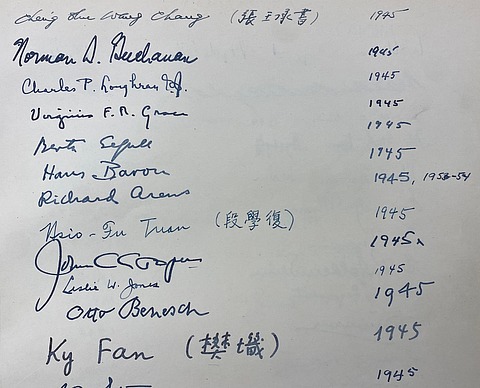
Returning to the dormitory, I eagerly shared that afternoon’s glimpse with my closest friends. I was determined to find more information about this remarkable individual online so that I could enlighten my friends about her significant contributions. With this goal in mind, I turned to Google and entered the search query “female physicist, Shanghai, University of Michigan.” However, the search results led me to a scientist named Chien-Shiung Wu, who, as it turns out, was born in Jiangsu, China, and had no connection to the University of Michigan. As I continued clicking on links that were unrelated to the person I was actually seeking, I couldn’t help but regret not remembering the scientist’s name with more precision. (In my own defense, this confusion primarily arose from the fact that the Chinese romanization system I had grown up with, Pinyin, was introduced in the 1950s, whereas all the Chinese scientists who visited IAS in the twentieth century had used Wade-Giles as the romanization of their names, and these two systems are quite distinct.)
The mystery surrounding this female scientist continued to occupy my thoughts throughout the night, until I finally seized the opportunity to revisit the archives center the following day in my quest to obtain the correct spelling of her name, C.S. Wang Chang. Once again, I entered her name into Google, hopeful of uncovering a detailed Wikipedia page dedicated to her. Sadly, my efforts yielded meager results. Following an exhaustive search, I recruited Caitlin, who eventually succeeded in identifying the elusive C.S. Wang Chang on Wikidata. Astonishingly, our breakthrough came by sifting through her husband’s Wikipedia page, leaving me with a sense of frustration and bewilderment.
Subsequently, I made an attempt to locate her on the Chinese internet by entering “C.S. Wang Chang” into the search bar. As anticipated, the results were disappointing, as Wade-Giles had long fallen out of use in mainland China. Faced with this obstruction, I turned again to Caitlin, inquiring whether it might be possible to ascertain her name in Chinese characters. To my delight, Caitlin provided me with a signature book of all the former members of IAS starting from Albert Einstein. With meticulous scrutiny, I eventually uncovered her distinctive signature—張王承書, with the initial character ‘張’ signifying her husband’s surname.

After this extensive journey of discovery, I proceeded to enter her name, “王承書,” into the Chinese internet, finally unearthing a comprehensive catalog of narratives recounting her life and contributions, organized chronologically. This outcome defied the norm, as typically Wikipedia boasts a wealth of information compared to the Chinese internet.
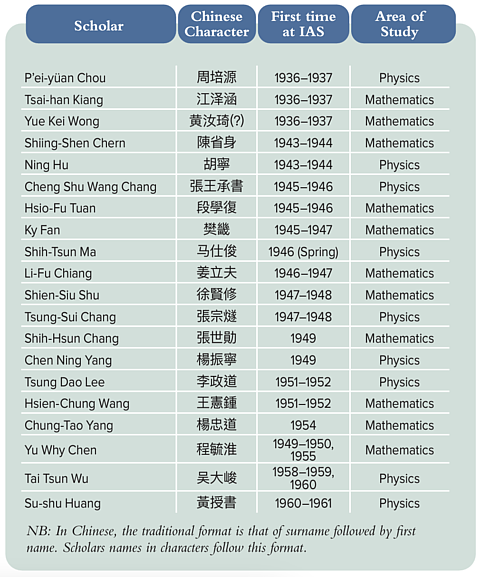
I found myself pondering why this situation persisted, where an abundance of valuable information remained unshared solely due to language barriers, an issue that should no longer be a significant concern. It then dawned on me that this predicament was primarily rooted in the transition between different romanization systems.1 Consequently, I was inspired to compile a comprehensive list of the scientists I encountered in the signature book. I identified those who had inscribed their names in Chinese characters and were born in China, provided their names in both traditional and simplified Chinese characters, in Wade-Giles, and in Pinyin, and included relevant Wikipedia links, as well as links to Chinese profiles that I could locate on the Chinese internet.
It’s important to note that while this list is by no means exhaustive and only covers scientists who were Members until the 1960s who I saw in the signature book, I hope that it may prove beneficial to anyone else interested in delving into the life stories of these Chinese scientists who studied the United States during the twentieth century. My aspiration is that this endeavor will help shed light on their remarkable accomplishments, and make their contributions more widely known, both in the United States and in China.
Zhengkai Li is a graduate student enrolled in the mathematics department at the University of Washington. She achieved her Bachelor of Science in mathematics with the highest distinction from the University of Rochester in 2021.
- With the transition from Wade-Giles to Pinyin, our younger generations may struggle to connect certain words from the old system with Chinese characters (if there is even an occasion where younger generations in China need to use the old system). For instance, under the new system, “Chien Shiung” would become “Jian Xiong.” Furthermore, the correspondence between Romanization and Chinese characters is not a one-to-one match. To illustrate: when considering pronunciation alone, there are more than 100 Chinese characters that share the same “Chen” pronunciation. Add to this the fact that Chinese characters themselves have undergone changes over time. In the twentieth century, mainland China primarily used traditional Chinese characters. However, in contemporary mainland China, we now predominantly use simplified Chinese characters, while in Hong Kong and Taiwan, traditional Chinese characters are still in use (with slight variations between the two regions). Fortunately, this doesn’t pose significant challenges, as traditional and simplified Chinese characters remain quite similar, especially for those whose first language is Chinese. For example, ‘張’ is now written as ‘张’.
